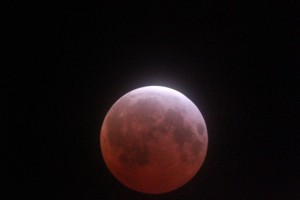Maunakea Speakers Talk to Explore ‘Lunar Eclipse Photometry’
The next Maunakea Speakers Series lecture will feature Dr. Elmar Schmidt, professor of Engineering, Mathematics and Physics at SRH University of Applied Sciences in Heidelberg, Germany, presenting “Ten Years of Lunar Eclipse Photometry” on Thursday, Feb. 1, starting at 7 p.m.
The free talk will be held in the UH Hilo Science & Tech Building auditorium, room 108. On-campus parking will be available without charge after 4 p.m.
Photometry refers to the science of measuring the Moon’s brightness, which gives researchers information about the Sun-Earth-Moon system and the composition and micro-topography of lunar soil. In addition, the minimal light of total lunar eclipses contains information about stratospheric aerosol and ozone on both a global scale and in the course of time to historical records.
A key aspect of Dr. Schmidt’s work involves accessing prime astronomical sites and “photometric nights” during total lunar eclipses. Among these are NOAA’s Mauna Loa Observatory, which was visited twice in 2007 and 2014 to gather data during these events.
On a separate note, the lecture event will mark the first successful year for the Maunakea Speakers Series, a monthly scholar-focused presentation offered in partnership by the Office of Maunakea Management, ‘Imiloa Astronomy Center and the University of Hawai’i at Hilo Department of Physics & Astronomy.
“When we launched this speaker series last year, our intent was to provide thought-provoking lectures, presentations on new research findings, and scientific findings that would help deepen our collective knowledge and understanding of the resources on Maunakea,” said Office of Maunakea Management Director Stephanie Nagata. “After a successful year, we are excited to continue this series with science talks and research presentations that continue to engage our community with interesting educational opportunities—goals we all share.”
In its first year, the lecture series explored Hawai‘i’s native birds, arthropod diversity, Lake Waiau, climate change, ancient Hawaiian adzes, growth and evolution of Hawai‘i Island volcanoes and the Malama Honua Worldwide Voyage.















